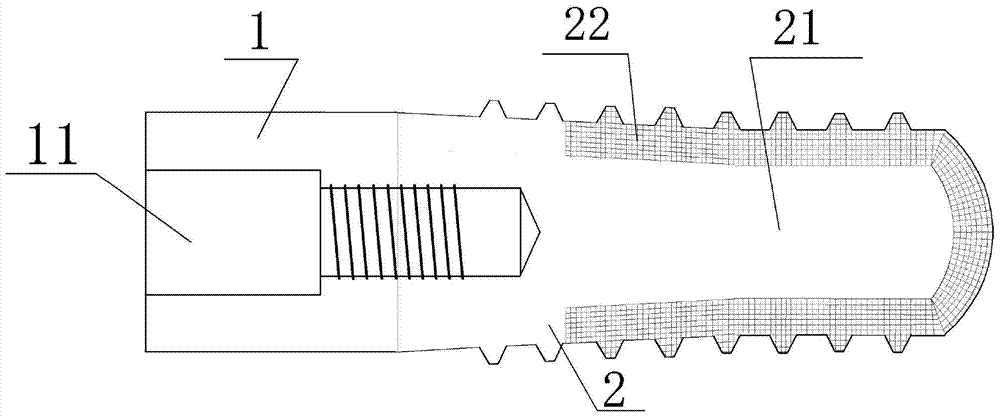A design and fabrication method for individualized 3D printed implants
A technology of 3D printing and manufacturing method, applied in the field of medical implanted biomaterials, can solve the problems of increased implantation risk and large difference in the elastic modulus of the jaw between titanium and titanium, and achieves the effect of low cost and simple process
- Summary
- Abstract
- Description
- Claims
- Application Information
AI Technical Summary
Problems solved by technology
Method used
Image
Examples
Embodiment Construction
[0022] The embodiments of the present invention are described in detail below. This embodiment is implemented on the premise of the technical solution of the present invention, and detailed implementation methods and specific operating procedures are provided, but the protection scope of the present invention is not limited to the following implementation example.
[0023] Such as figure 1 As shown, the printed implant of this embodiment includes an integrally formed head 1 and body 2, the head 1 is provided with a groove 11 for connecting the foundation pile, the surface of the body 2 is provided with threads, and the body 2 includes a solid Body 21 and porous grid body 22 , the porous grid body 22 covers the outer surface of the solid body 21 . The porous grid body 22 is a porous grid structure. The head 1 is the gingival part, and the body 2 is the osseointegration part.
[0024] This embodiment includes the following steps:
[0025] (1) The pore diameter of the porous ...
PUM
 Login to View More
Login to View More Abstract
Description
Claims
Application Information
 Login to View More
Login to View More - R&D
- Intellectual Property
- Life Sciences
- Materials
- Tech Scout
- Unparalleled Data Quality
- Higher Quality Content
- 60% Fewer Hallucinations
Browse by: Latest US Patents, China's latest patents, Technical Efficacy Thesaurus, Application Domain, Technology Topic, Popular Technical Reports.
© 2025 PatSnap. All rights reserved.Legal|Privacy policy|Modern Slavery Act Transparency Statement|Sitemap|About US| Contact US: help@patsnap.com

